Master the basic cooking process of this healthy grain for perfect, firm-yet-fluffy brown rice every time.
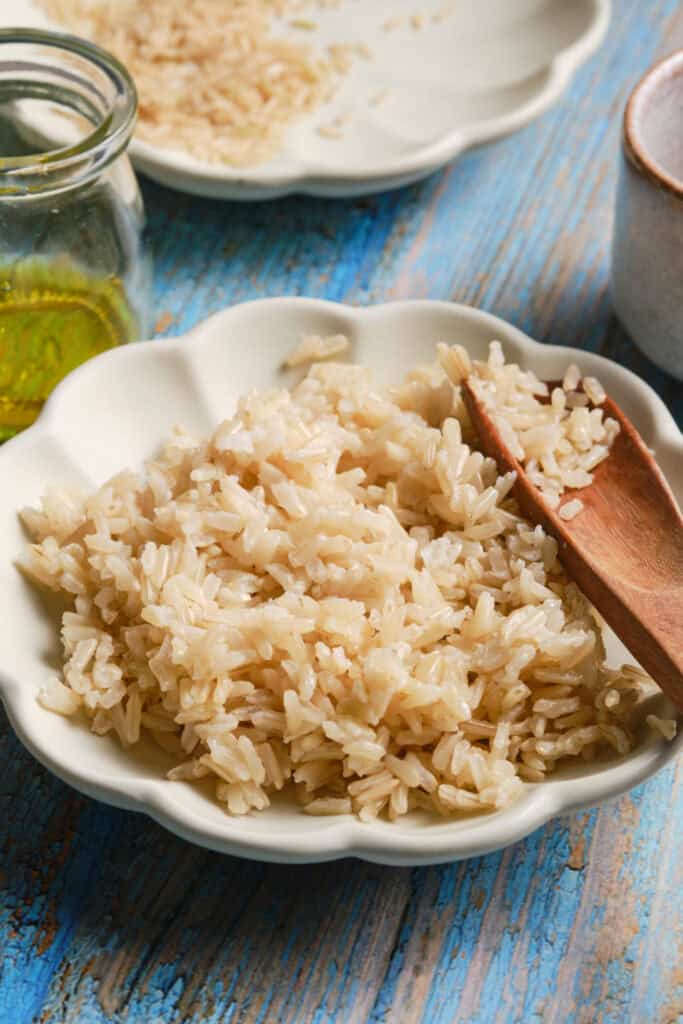
White rice was the sturdy backbone of most of our family dinners when I was growing up. Brown rice came into the picture later, when I realized how important it was to eat foods that contain fiber. Brown rice isn’t quite as quick to cook as white rice, but the extra nutrients in brown rice certainly make it worth the extra time on the stovetop. Plus, you get a boost in the flavor department while you’re at it.
My shift to cooking brown rice took a bit of adjustment time (in other words, quite a few hot proteins came off the grill 30 minutes before the rice was finished cooking), but I figured out the timing of the dinner symphony eventually, and it’s rare these days to find a bag of white rice in my kitchen.
For those of you who know how to cook rice, think of this as less of a recipe and more of a collection of tips to fine-tune your methods. It’s always good to have a refresher course, so to speak. Plus, some of the most important lessons I’ve accumulated over the years have come from reading cookbooks that address basic cooking techniques—ones I thought I had already mastered. So always have an open mind; you never know when you’ll learn something new.
Is Brown Rice Healthy?
Brown rice is a whole grain, which means it has more vitamins, minerals, fiber, and overall nutritional value than refined white rice. It has a relatively moderate calorie count for a carbohydrate, it’s naturally low in fat, and it also has a lower glycemic index, which is good news for those concerned with blood sugar levels. It’s suitable for vegan, Mediterranean, and gluten-free diets as well.

Types Of Brown Rice
Like white rice, brown rice comes in many types. There’s long grain, which is most common, and most likely the type you’ll end up with if you buy a prepackaged bag of brown rice at a grocery store. But if you like short-grain or medium-grain white rice, I suggest trying those varieties of brown rice, too. Medium-grain brown rice is easy to find in many Asian markets, and usually at a great price point, in my experience! There’s also brown basmati rice and brown jasmine rice.
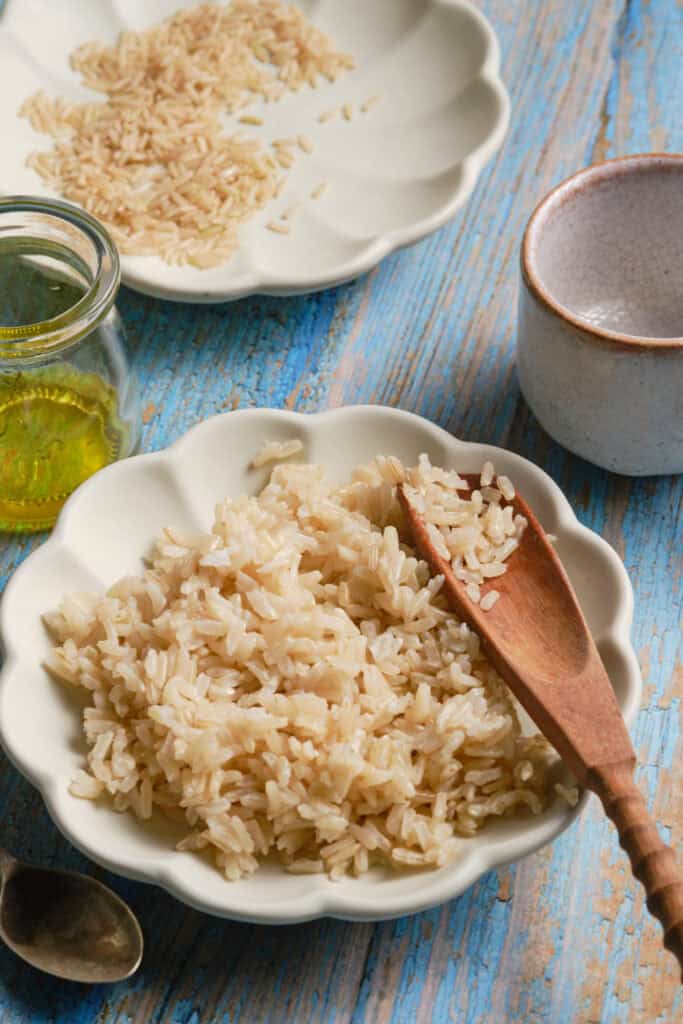
How Do I Store Leftovers?
Leftover brown rice can be kept in an airtight container (or Ziploc bag) in the fridge for up to 4 days. You can also store it in the freezer for up to 3 months. If you want to freeze it, I recommend putting the rice in freezer-safe Ziploc bags so that you can flatten them out and make it easier to store. You can thaw it out in the fridge overnight and reheat it in the microwave.
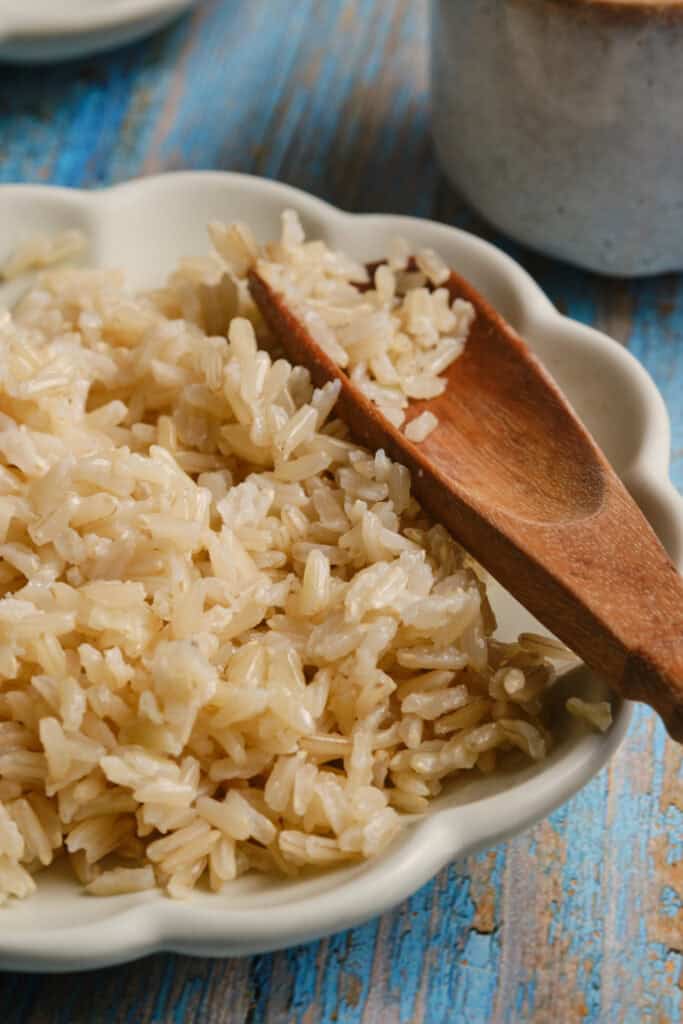
Serving Suggestions
Brown rice is one of my all-time favorite bases for a meal. You can go all out and serve it alongside a Mexican-inspired feast, perhaps with these Healthy Low-Carb Chicken Enchiladas, some Refried Beans, and chopped cilantro for the rice. Or you could go low-key, as I often do, and simply fry an egg to put on top of a scoop of brown rice mixed in with some Sautéed Spinach for extra nutrition.
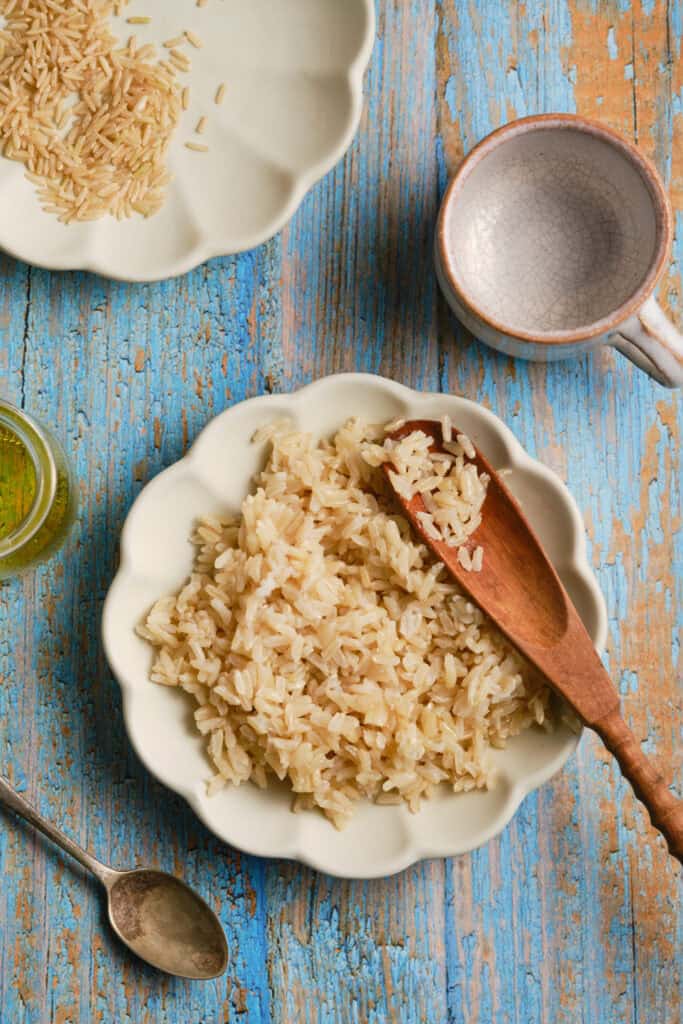
Recipe
Ingredients
- 1 cup uncooked brown rice well rinsed and drained
- 2 cups water
- 1 teaspoon extra-virgin olive oil
Instructions
- Combine the rinsed brown rice, water, and olive oil in a medium-sized pot. Bring the mixture to a rolling boil over high heat.
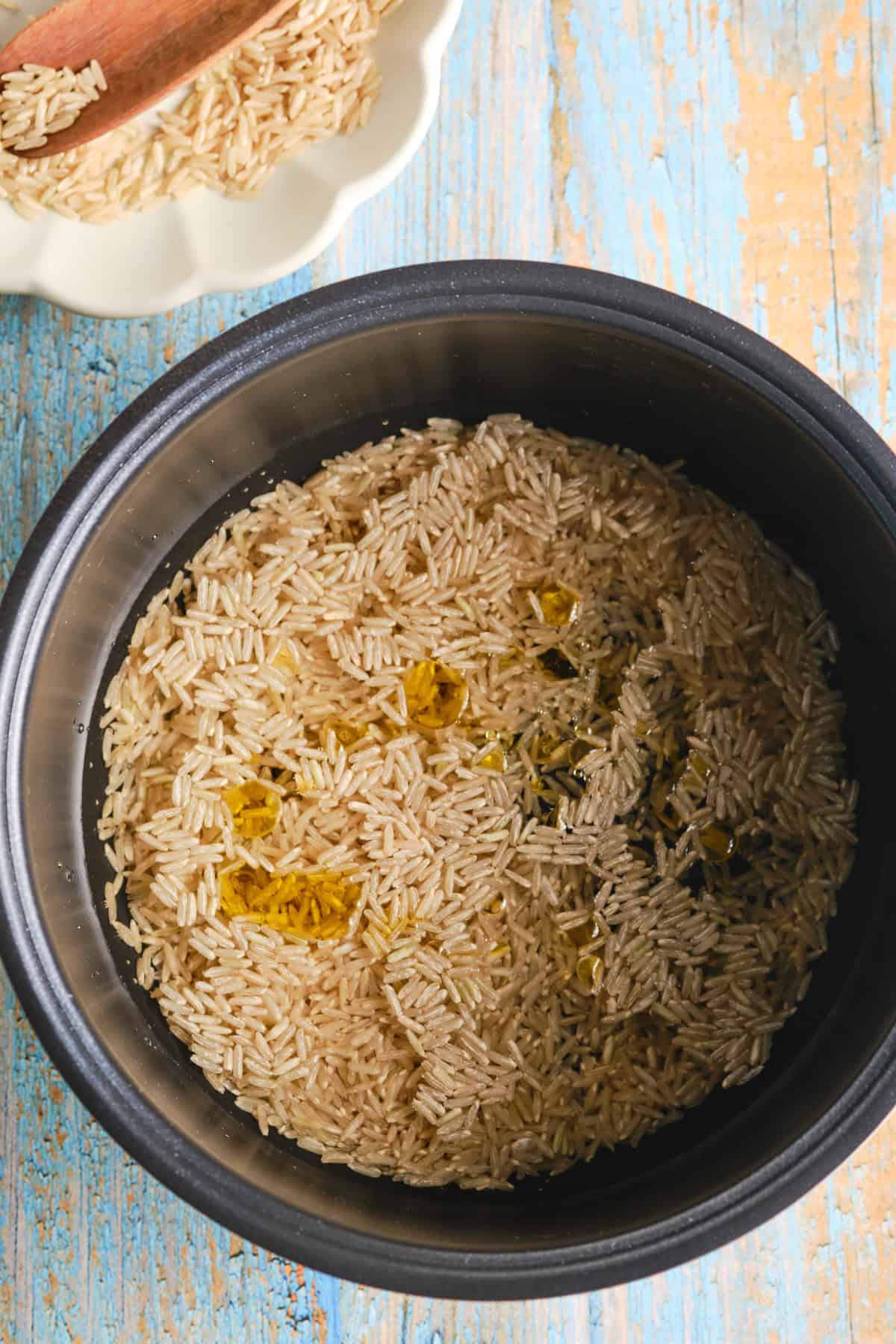
- Once boiling, cover the pot with a tight-fitting lid, then reduce the heat to low. Allow the rice to simmer for 45 minutes without lifting the lid.
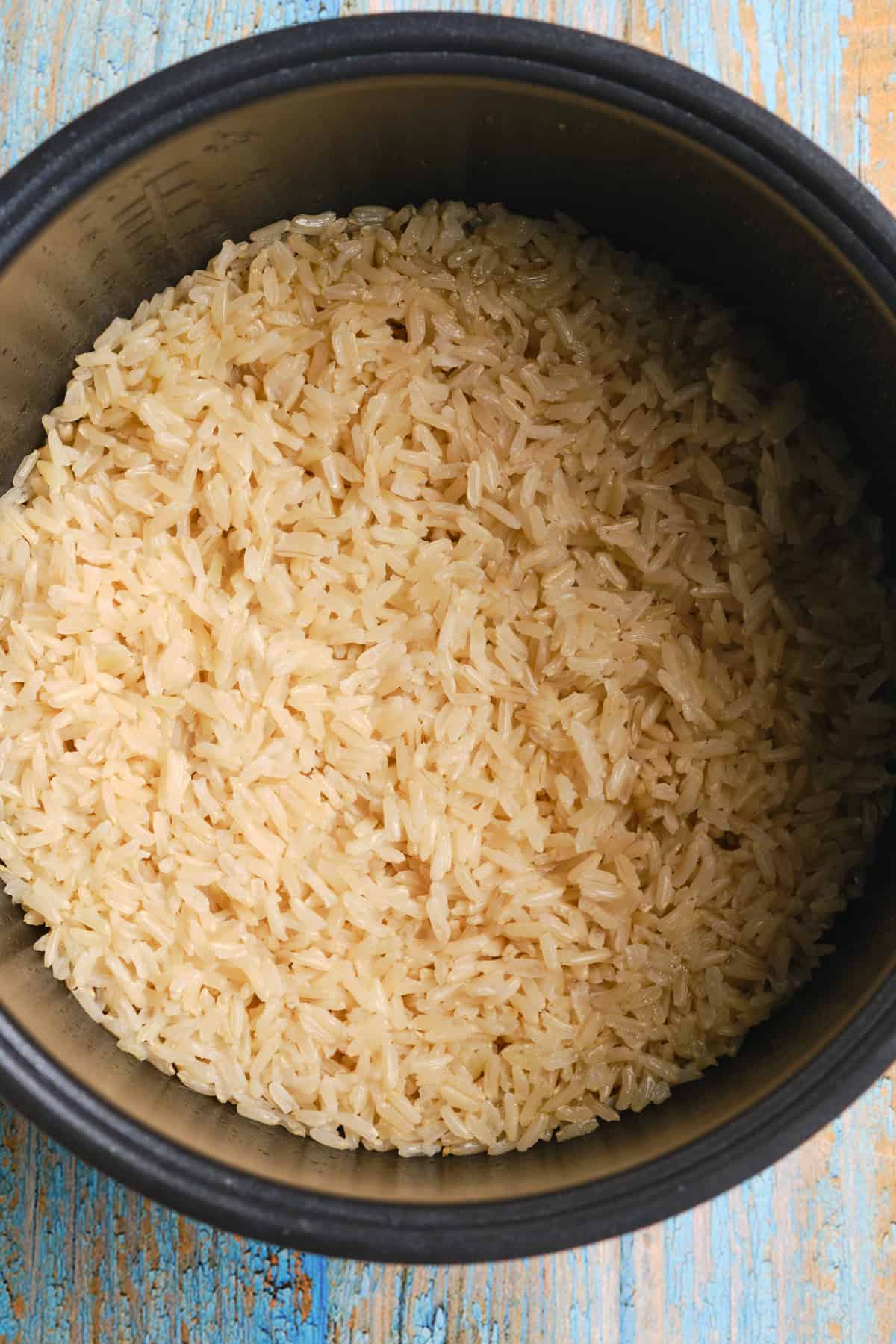
- After 45 minutes, turn off the heat. Let the rice sit, still covered, for 10 minutes to absorb any remaining steam and moisture.
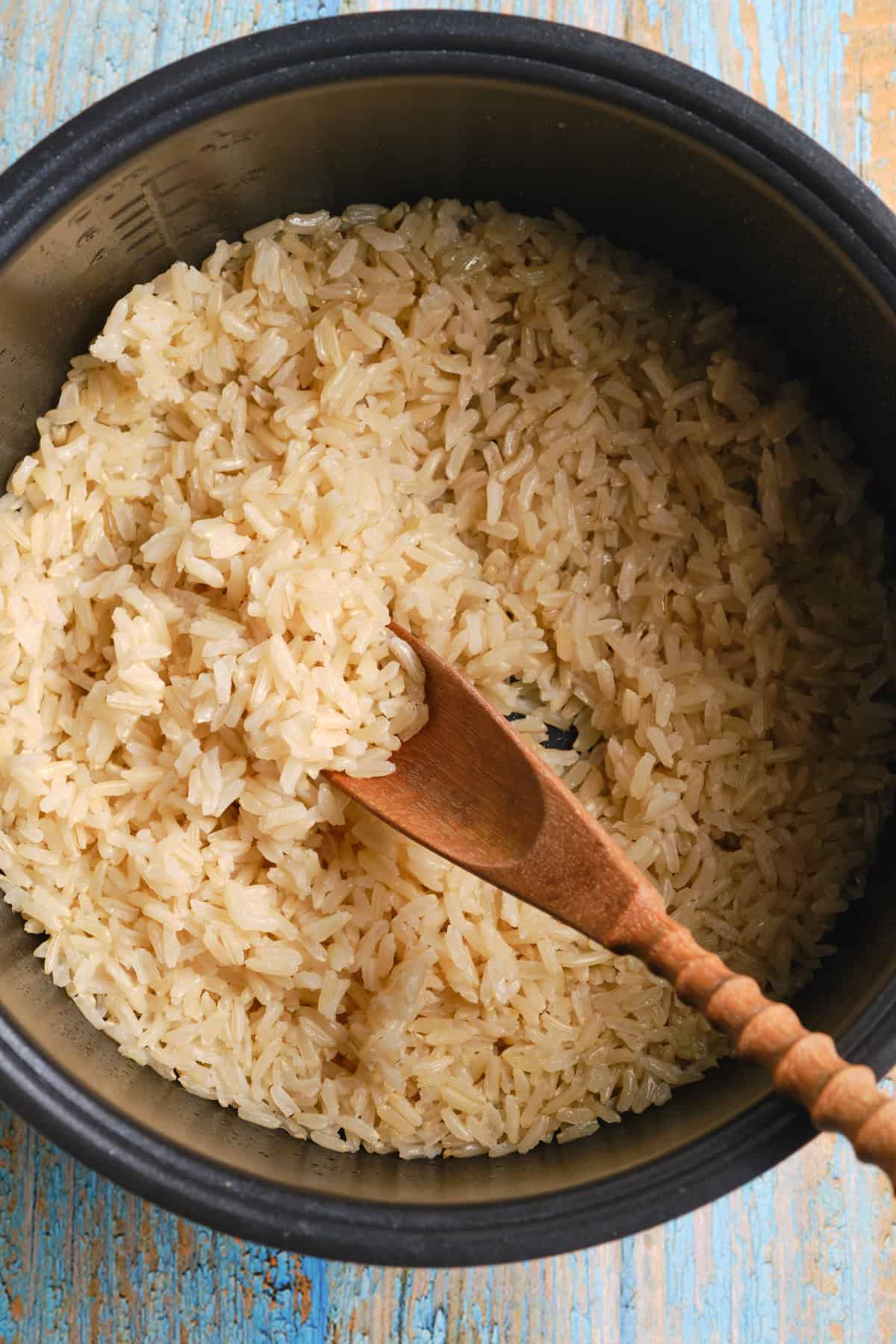
- Fluff the cooked brown rice with a fork to separate the grains and serve.
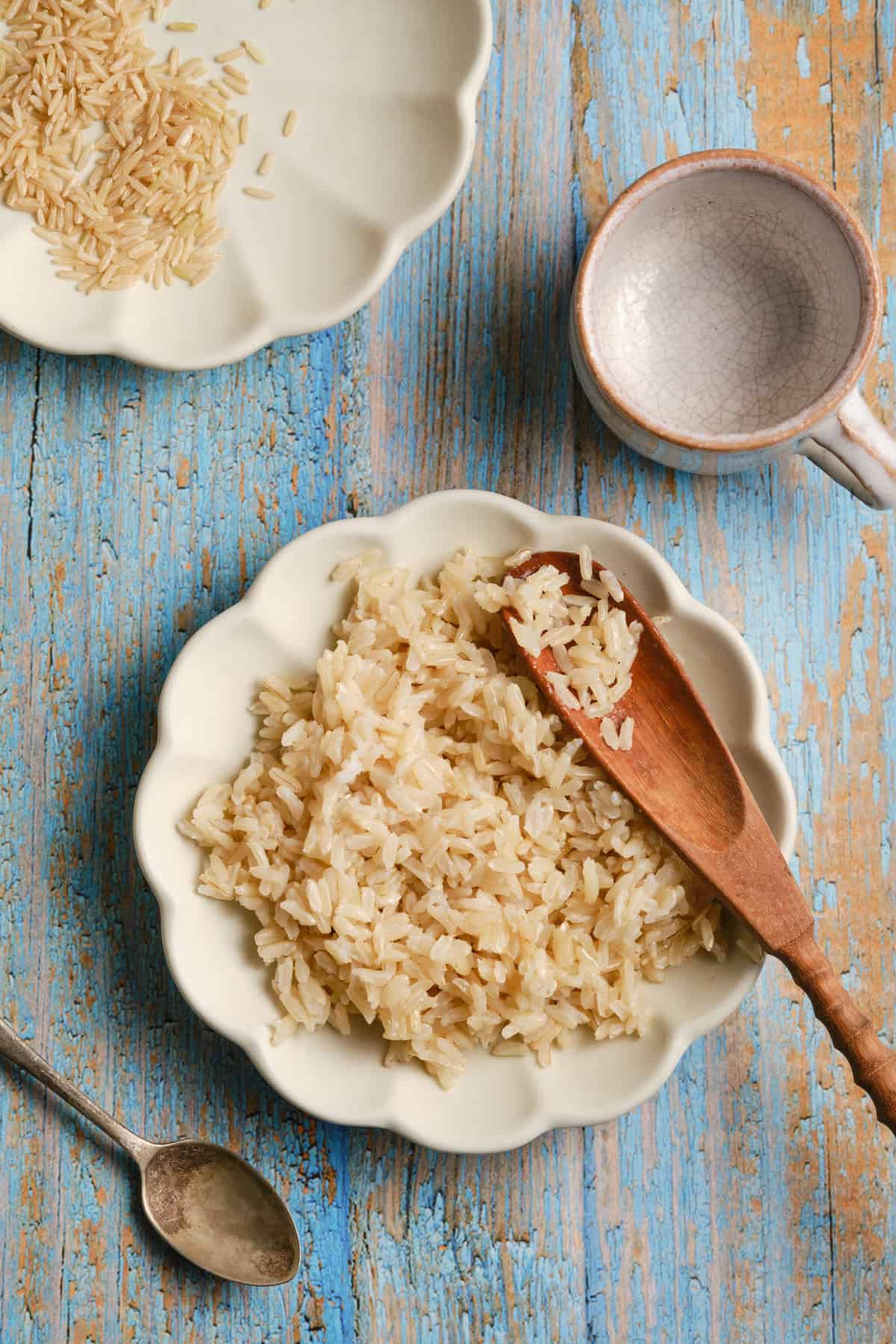
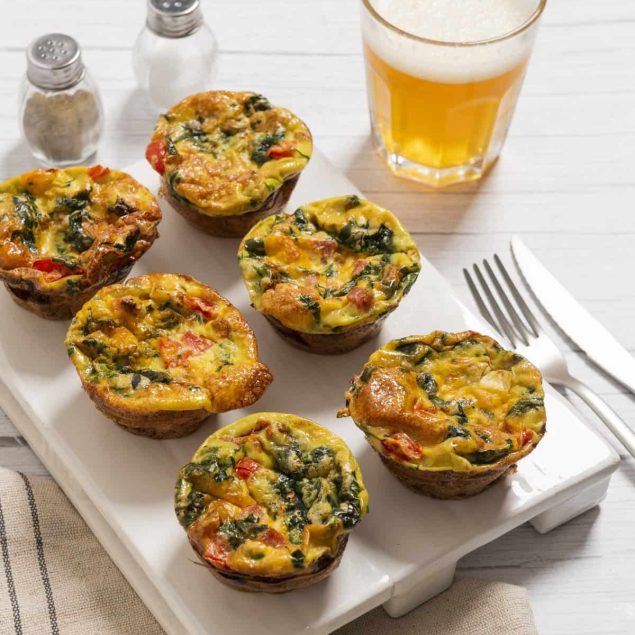
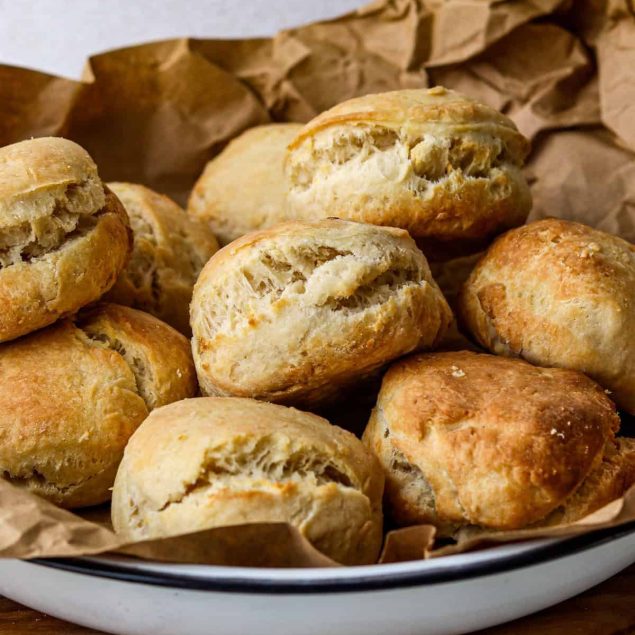
Leave a Comment